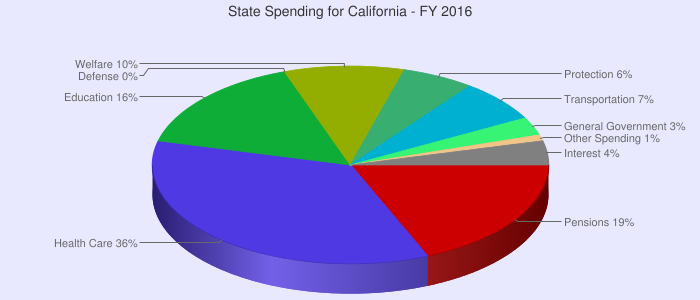Tuition Increases and Financial Aid
Before 2007, the U.S. experienced an economic downturn that led to huge budget cuts across higher institutions of learning in various states, including California. As a result, these institutions were forced to take drastic measures, including a hike in tuition to almost twofold the usual tuition fee. In the same way, a similar occurrence is likely to result in dire consequences for students, their families, and the college at large.
Consequences to
Students
Students will be forced to take on more debt to support their ongoing studies (Mitchell, Palacios, and Leachman par. 21). Unfortunately, students that have not yet enrolled in college programs will be reluctant to attend college resulting in few enrollment rates within the state of California.
Faculty and Administrators
As a rule of thumb, it will be difficult for the college to maintain the high salaries and annual increments for the faculty administrators. Hence, the administrators will experience a cut in their income due to a review of their salaries in alignment with the college’s revenue.
Alternatives to Increasing Tuition Fee
Cost-cutting
The college needs to align its expenditure with the estimated revenue for the upcoming fiscal year.
Seeking Help from Philanthropists
Despite the issues that the state might be facing in terms of low revenue to support its citizens, there might be individuals or corporations that have superfluous income/revenue and would not mind sharing it with others. Therefore, I would recommend that the college identifies potential philanthropists and presents a proposal to justify the need for money.
Alumni Support
Alumni students can be called upon to aid in supporting the college through small contributions when added together to generate revenue for the college (White 20).
Distribution of Aid
Both merit and need-based approaches will be used to help in distributing financial aid. Students with exemplary performance, but without the financial capacity will be given aid. Certain criteria to define need will be devised to avoid bias in aid distribution.
Discussion 3: Tuition Policy and Tuition Practices

As shown in the chart above, education is among the domains that receive a huge portion of the national cake in the state of California. Unfortunately, how funds for education are distributed is not objective, as shown below:

According to the table above, it is clear that there have been increments in the distribution of resources to the various levels of education. However, fewer resources are given to higher education. According to the state budget, community colleges are accorded some funds, but how this distribution is done to specific colleges is unclear. The University of California (UC), California State University (CSU), and California Community Colleges are the main beneficiaries of the state’s financial aid.
The colleges cater to the educational needs of three-fold the number of students attending CSU and UC combined. In the same way, it would be expected that the allocation of public funds would be proportionate to the number of students. But the community colleges get fewer dollars than would be expected as indicated in the figure below:

The state has been increasing the allocation of funds to the different institutions of higher learning. One can decipher that variation is based on the status of the institution’s higher learning. The universities, which are ranked on a higher pedestal than the community colleges, are allotted more funds than the colleges. It would be advisable for the state to restore funding by cutting from other areas to support education, which is the foundation of California’s economy. A total of ≈$800 will be necessary to restore the 15% budget cuts.
Differential Tuition
Differential tuition refers to the extra money charged over the typical university charges. This kind of tuition is implemented to enhance the learning process by obtaining new equipment, updating technology, and offering extra lectures. Caustic remarks have been directed at the newly invented differential tuition system by some of the institutions of higher learning. Community colleges, such as Santa Monica, and Coastline Community College in California have adopted creative means of meeting the institutions’ financial needs despite the cuts.
Initially, Santa Monica adopted a discriminatory approach that led to destructive fracas and media frenzy; hence, it was shelved for a while before it was later re-introduced using a more prudent approach. Unlike Santa Monica, the other community colleges offer differential tuition for courses that are more expensive to teach in comparison to other courses or if students enroll for a program outside what the institution can offer. Nurses, engineering, and business programs are targeted programs for the differential tuition approach due to associated extra costs incurred.
Santa Monica justifies the implementation of differential tuition as aiming to meet the demands of outrageous numbers in some courses. Besides, since the colleges suffered budget cuts they have suffered faculty layoffs, recruitment processes have been frozen, and enrollment rates have dropped tremendously to the extent that 600,000 students have not been able to further their education due to the budget cuts (Fain par. 6). Tuition does not vary across institutions of the same status, but it does vary about a family’s income.
Works Cited
Chantrill, Christopher. California State Spending Pie Chart. 2015. Web.
Fain, Paul. One Price in California. 2013. Web.
Higher Education: Governor’s Budget 2014-15. 2014. Web.
Mitchell, Michael, Vincent Palacios, and Michael Leachman. States are still funding higher education below pre-recession levels. 2014. Web.
Public Policy Institute of California. California’s State Budget: The enacted 2015-2016 Budget. 2015. Web.
White, Fredrick. Community College Finance: an Analysis of Resource Development at Mississippi’s Community and Junior Colleges. Newcastle: Cambridge Scholars Publishing, 2010.